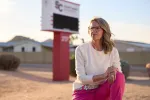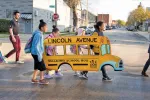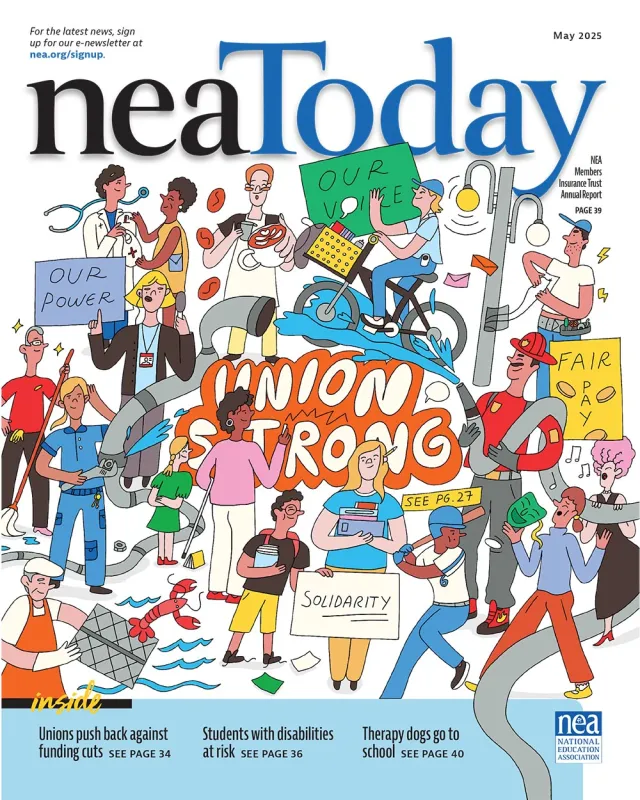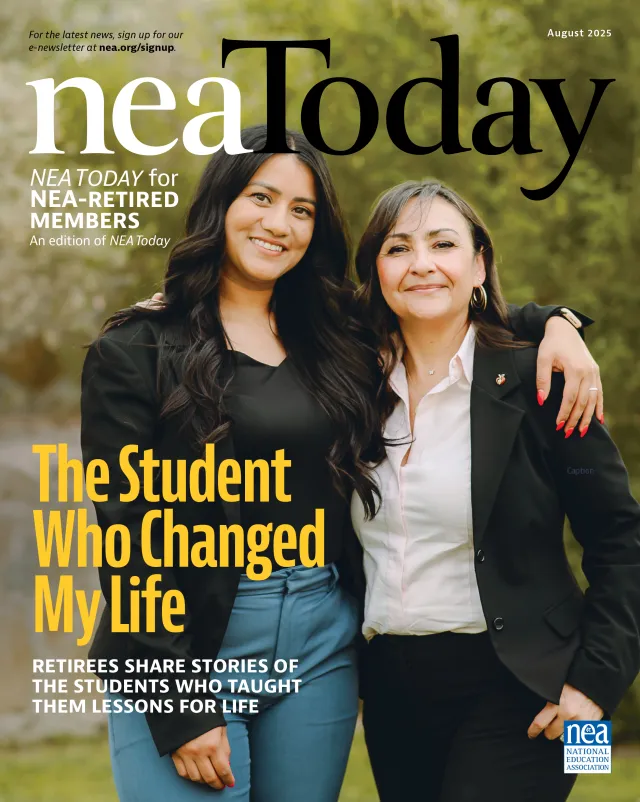Result List

Cover Story
Know Your Rights
Do you know when to raise your union voice? From academic freedom and personal safety to advocacy, fair pay, and more, this guide highlights key rights that every NEA member should know about and defend this year. You’ll discover real stories of educators using their voice, power, and union to protect students and shape public education.

Feature Article
Bringing Heart and Healing to the Classroom
For California English teacher Mike Tinoco, teaching is about people, relationships, and, at its core, love. His approach challenges the idea that love and care are “extras” in education—they’re the foundation.

Feature Article
The Price We Pay for Vouchers
Voucher programs harm public schools and entire communities. Why are some elected leaders forcing them on us?

Feature Article
Mic Check: One, Two, … One, Teach!
From multiplication bars to literacy stars, teachers are transforming learning with hip-hop.

Feature Article
How Schools Are Tackling Chronic Absenteeism
Chronic absenteeism—when a student misses 10 percent of school days or more in one academic year—is a persistent nationwide problem. And many schools are still working to get students back to the classroom.

Feature Article
The Survey Says: ‘We’re at a Crisis Point’
Educators seek comprehensive solutions to address student behavior problems.

Feature Article
Meet the 2025 NEA Human and Civil Rights Awards Winners
NEA honors nine leaders advancing equity, justice, and education.

Education Support Professionals
How ESPs Advocate for Fair Pay, Better Working Conditions and Respect
More states adopt NEA ESP Bill of Rights to say, “One job should be enough!”
Special Sections
-
In the KnowMeet the 2025 National Teacher of the Year, Ashlie Crosson.
-
Issues and ActionLearn how to rev up your advocacy for students and public schools.
-
Try This: EngageTo navigate everyday challenges at work, follow the wisdom of Ted Lasso.
-
Try This: TechnologyStart the new school year with a better system for organizing your digital files.
Departments
-
Becky's Journal of Joy, Justice, and ExcellenceNEA President Becky Pringle and educators from across the U.S. marched side-by-side within a few hundred yards of the White house on May Day.
-
NEA in ActionNEA helps Utah educators, defends inclusive education, and more.
-
Our Voices - Quick TakesEducators share small things they are doing for their students every day.
-
NEA Representative AssemblyTheir strength and solidarity bolstered, 7,000 educators now return home to protect public education from further attack.
-
ResourcesCall for 2026 Nominations!
-
Last LookThousands of educators and their allies took to the streets on May Day.
Find more NEA Today Stories

NEA Today, May 2025
Unions are more powerful when they work together! Play NEA’s interactive game to see if you can spot all the union allies in your neighborhood. In this issue, you'll also find out how cuts to the Department of Education will harm students and how educators who are pushing back.

NEA Today for Aspiring Educators, Spring 2025
You can join Aspiring Educators working to improve mental health supports, financial assistance, and student rights. Many depend on Pell Grants to continue their education, yet these crucial funds face uncertainty. By getting involved, you can help strengthen the teacher pipeline and create a more inclusive, supportive system.

NEA Today for NEA-Retired Members, August 2025
In the first all-digital issue of NEA Today for NEA-Retired Members, you’ll find more content specifically for retired educators. You’ll hear from NEA-Retired members’ stories of students who inspired them and showed them the true meaning of resilience and bravery. You’ll find tips for managing your money in an uncertain economy and a step-by-step guide about how to push back against the Trump administration’s policies that harm students and public schools.
Get more from

We're here to help you succeed in your career, advocate for public school students, and stay up to date on the latest education news. Sign up to stay informed.

